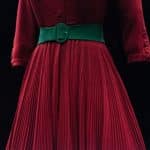There’s something magical about the idea of a secret room in your home. More so, if that room happens to be a library – a quiet refuge from the world where you can immerse yourself in books. But how do you create that hidden door leading to your sanctuary? If you’ve been pondering over this, we’ve got you covered. Here’s a comprehensive guide on designing a home library with a secret door for the ultimate retreat.
Find The Perfect Spot For Your Hidden Library
Before you set out to create your secret library, you must identify the ideal location. This section will provide insights on the factors to consider when choosing the perfect spot for your hidden room.
Also to discover : What Are the Innovative Container Gardening Ideas for Small Patios or Balconies?
When considering potential spots for your secret library, location is everything. A good starting point is to consider rooms that aren’t frequently used, like a formal dining room or an extra bedroom. Another option is to repurpose a large closet or underutilized storage space.
It’s important to note that the chosen room must be large enough to accommodate not just your book collection, but also comfortable seating, good lighting, and perhaps a desk for reading or writing. For a secret room, you also need space for the hidden door mechanism. Be creative; this could be a bookcase that swings open or a wall panel that slides to reveal the secret room.
In parallel : How Can You Design a Home Exterior with Drought-Resistant Landscaping and Water Conservation Features?
Choosing a Custom Door Design
Next, let’s delve into choosing a door design for your hidden library. It’s crucial to pick a design that seamlessly integrates with the decor of the adjoining room so that it remains a well-kept secret.
A bookcase door is a popular choice for a library. It’s functional, aesthetic, and blends perfectly with the concept of a library. A well-crafted bookcase door will appear like any other bookshelf in your home, keeping your secret room truly hidden.
Another option is a wall panel door. This design involves a section of the wall that opens into the secret room. It’s a great choice if you want the door to be completely hidden when closed.
Customizing Your Library Space
Once you’ve chosen your spot and door design, it’s time to customize the interior of your library. In this section, we’ll explore ideas on how you can design your library for a cozy and snug reading experience.
The first aspect to consider is lighting. A well-lit library enhances your reading experience. Depending on your preference, you might want to install bright overhead lights, soft corner lamps, or even a stylish chandelier. Natural light is also a great option, so consider installing a skylight or window if possible.
Storage is another crucial aspect. While the main component of your storage would be bookshelves, you could also consider incorporating cabinets or drawers for other items like stationery, notebooks, or board games.
Finally, think about your seating options. A plush armchair with a footrest, a comfy sofa, or even a hammock could be your chosen spot for those hours of reading.
Adding Personal Touches
In this part, we’ll discuss the final touches you can add to make your library truly your own. These are elements that reflect your personality and make your reading space truly unique.
A colour scheme that resonates with your taste can significantly enhance the look and feel of your library. You might choose a scheme that’s warm and cozy, or bold and vibrant, depending on your preference.
Don’t forget to add in elements that reflect your personal style. This could be anything from a rug in your favourite colour, a collection of vintage maps on the wall, or even some quirky bookends.
Incorporating the Hidden Door into Your Home’s Design
The final step of this process is to seamlessly integrate the hidden door into the existing design of your home. Here, we’ll discuss techniques to make your secret entrance utterly unnoticeable.
One way to achieve this is to continue the same theme and decor from the adjoining room onto the bookcase or the wall panel that serves as your hidden door. For instance, if your living room (the room leading to the secret library) has a rustic theme with wooden accents, make sure to carry this over to the bookcase door.
Another technique is to use diversion. Place other items of furniture or decorative pieces near the hidden door to draw attention away from it. With clever design and placement, your hidden door can blend seamlessly with its surroundings, remaining a secret known only to you.
Designing a home library with a hidden door for a secret retreat is a unique and rewarding project. So go ahead, let your creativity run wild and create a space that’s both a reader’s paradise and a hidden sanctuary.
The Mechanics Behind Hidden Doors
Delving into the technical side of things, let’s uncover the mechanics behind hidden doors. Understanding the working behind these secret entrances can help you appreciate the home engineering marvel that they are.
Hidden doors, commonly known as secret doors or hidden passageways, have always held a certain allure. They harken back to stories of hidden treasure, secret societies and magical realms. But beyond the romance and mystery, there’s a solid mechanical system at work here.
Hidden doors usually operate on a pivot hinge system. This means the door pivots around a single point, allowing it to swing open and closed. The pivot point is typically at the side of the door, and it’s hidden from view, adding to the magic.
Bookcase doors, a popular choice for home libraries, are a perfect example of this. The bookcase swings open like a door, revealing the hidden library behind. The pivot point can either be at the edge of the bookcase or centrally located, allowing the bookcase to swing open in either direction.
The key to a successful hidden door is to ensure it’s perfectly balanced. This can be achieved through careful weight distribution. For example, if you’re using a bookcase door, you’ll need to consider how many books it will hold and distribute the weight evenly. Too much weight on one side could make the door difficult to open or close.
Hidden doors can also incorporate electromagnetic locks or other locking systems for added security. This way, not only is your library a secret sanctuary, but it’s also a safe vault for your treasured book collection.
Finally, remember to check with local regulations and possibly consult with a professional before embarking on this home improvement project. It’s important to ensure that the hidden door is safe and complies with any building codes.
Conclusion: Unleashing Your Creative Home Design
A home library with a hidden door is more than just a reading nook – it’s a space that invokes mystery, wonder, and a sense of personal retreat. From choosing the perfect spot and custom door design to infusing your personality into the space, designing your secret library is an adventure in itself.
Interior design is all about creating spaces that reflect who you are, and a hidden library allows you to do just that in an extraordinary way. Whether you convert a living room, an extra bedroom, or even a wine cellar into a hidden library, the possibilities are endless.
The process of creating hidden rooms can be as engaging as the final product itself. It’s a journey of creativity and imagination, blending elements of interior design, home engineering, and personal style.
With the right planning and attention to detail, your home library can be both a peaceful retreat and a fascinating secret. But remember, the most important aspect is that it’s a space where you feel comfortable and inspired. After all, a home library is not just a repository of books, but a testament to your love for reading and learning.
So go forth, let your creative juices flow and transform a part of your home into a secluded literary haven. Your hidden library awaits!













